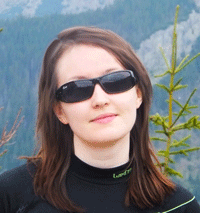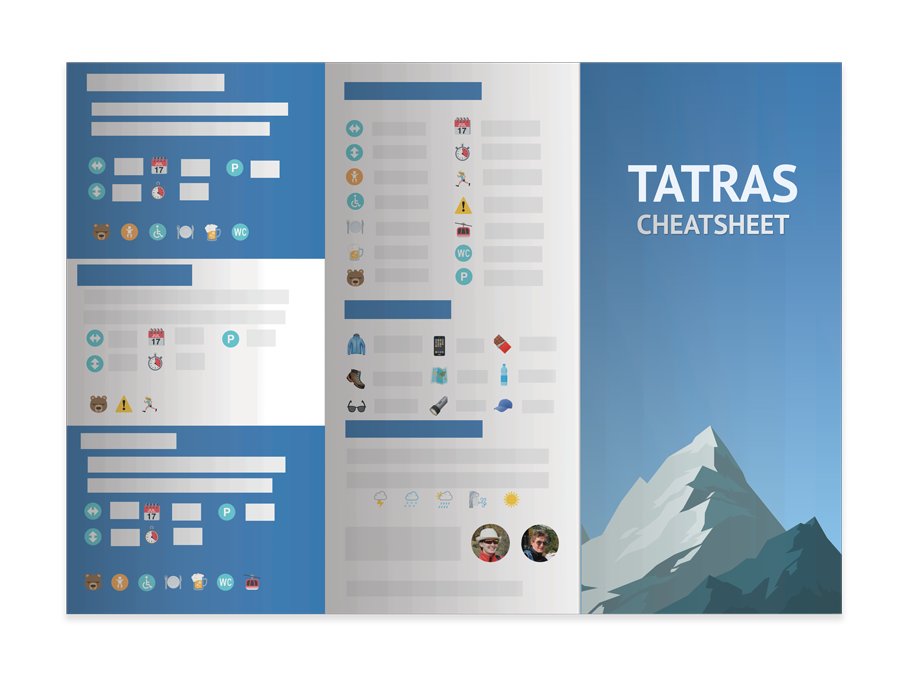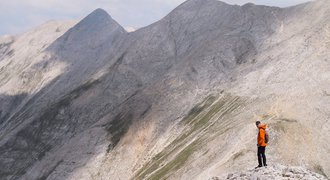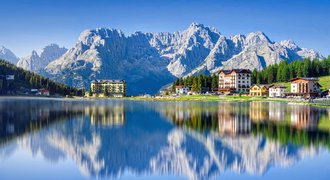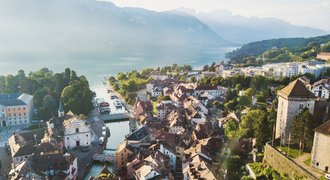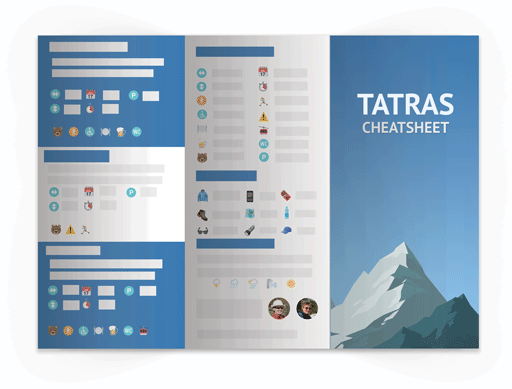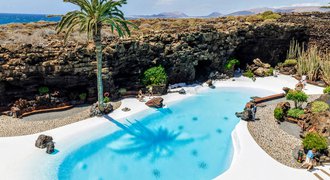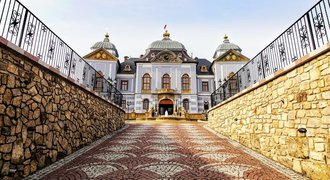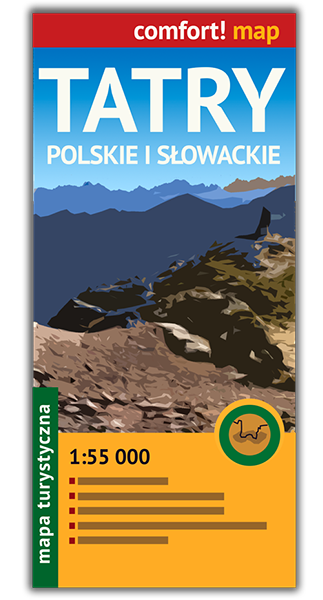If I had to describe Slovenia in just one word I'd choose diversity. It's a small country, yet it offers so many attractions!
Steep and dramatic Julian Alps with breathtaking turquoise mountain lakes, medieval castles, green hills covered in grapevine. As if it wasn't enough, in Slovenia there are the most beautiful caves in Europe and Adriatic beaches. All those awesome things are complemented with good wine and cuisine which combines the best of Italian, Balkan and Austrian food. All those things are available just 100 kilometres from Slovenia capital - Ljubljana.
Oh, and there's one more advantage to visit Slovenia - it's one of the cheapest countries in Europe!
Now, let's have a look at the best places to visit in Slovenia.
Table of contents
1. Lake Bled
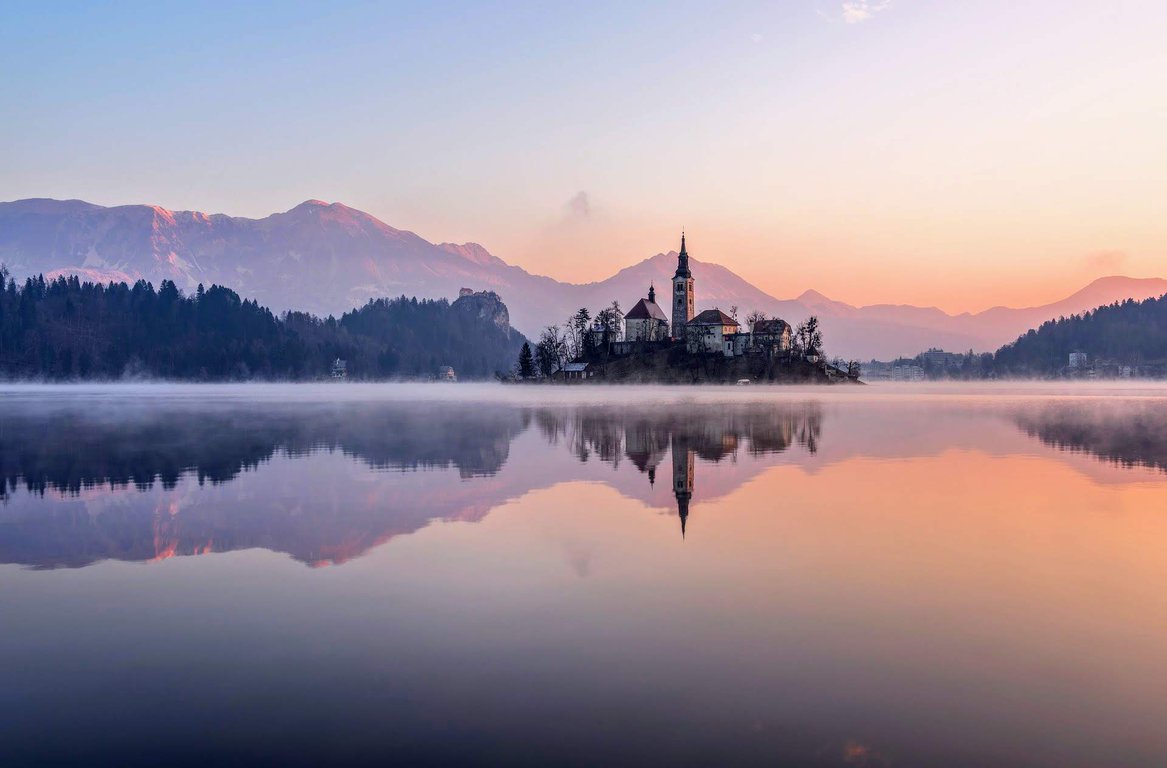
One of the top Slovenia landmarks. Spectacular Alpine lake with a 19th-century mountain resort. The lake is surrounded by beautiful villas and above this amazing place tower the Julian Alps. Many travellers consider Lake Bled one of the most beautiful places in Europe.
Actually, it attracts travellers not only with its beauty. Let's have a look at things to do in Bled:
- Blejski Otok island - one of the most popular places to visit in Slovenia. The only way to get to this small island is by boat. On Blejski Otok island there is a Pilgrimage Church of the Assumption of Maria. In this 15th century church, there is a famous bell. The legend has it that it can make your dream come true. You can pull the bell's rope and if there will be three bells your wish will be fulfilled.
- Bled Castle - the oldest castle in Slovenia. Situated 130 metres above the ground. You can visit there an antique printing shop and taste excellent local wines in the castle's cellar. But the most valuable elements of Bled Castle is the 16th-century chapel and a museum with an extensive collection of armour and weapons.
PRO TIP: get a guided tour with a boat ride and skip-the-line ticket. - Hot springs - lake Bled is one of the warmest lakes in the Alps - the temperature reaches 26°C. If you would like to take a bath in a hot thermal pool you can visit the Živa Wellness Centre or Grand Hotel Toplice. Both those places have pools with hot mineral water coming from nearby Alpine springs. Alternatively, you can stay at Sava Hotel Bled and get free access to the Živa Wellness Centre.
- Kremna rezina - famous Bled cake. To taste the best Bled cream cake you need to visit (again) the famous hotel - Grand Hotel Toplice. In the 50' the hotel cook created the perfect recipe for kremna rezina and it hasn't been changed since then. Four times bigger than usual piece of cake, it is very light and melts in your mouth. The cake has seven layers and is baked early in the morning to be consumed on the same day. Served on the terrace just over Lake Bled. Can it get any better? 😉
- Sports - for the adrenaline rush you can try canyoning, rock climbing, kayaking or rafting. If you prefer more peaceful sports you can rent a pedal boat or go fishing or just take a walk around Lake Bled.
2. Ljubljana
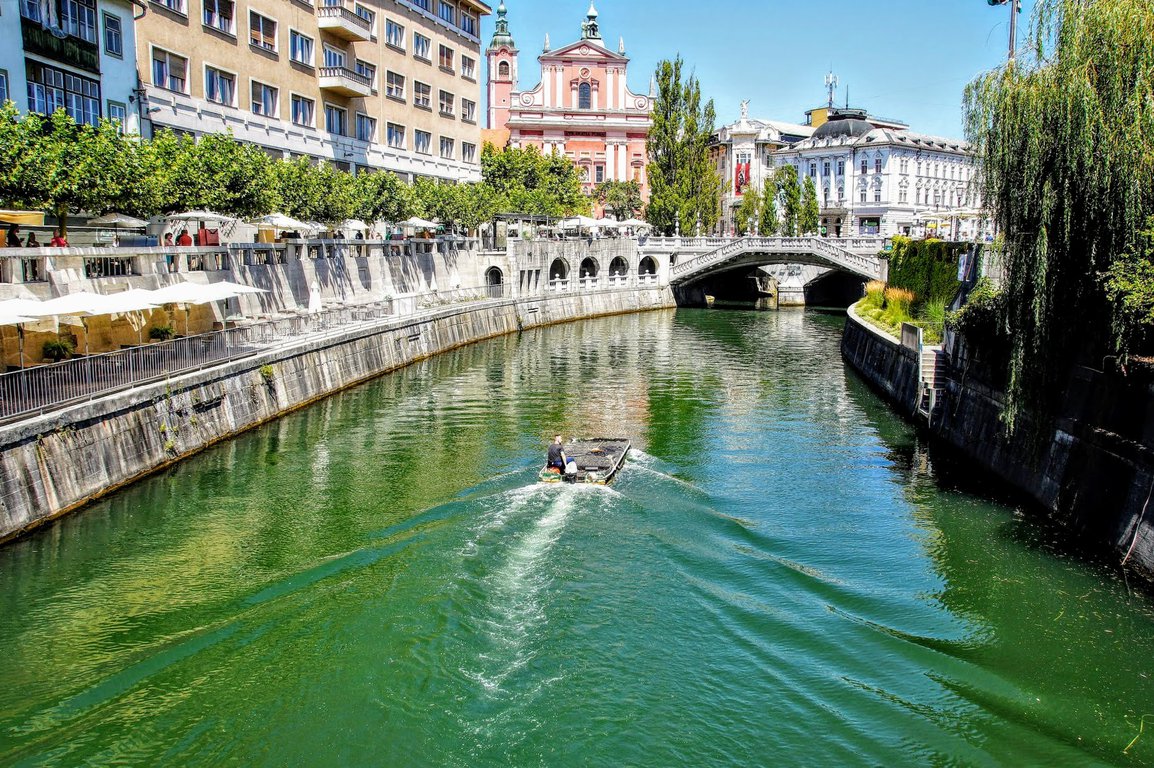
The capital city of Slovenia may not be a metropolis but it's certainly one of the best cities to visit in Europe. Great thing is that despite being the capital city, Ljubljana is also one of the cheapest cities in Europe!
This relatively small town is famous for its location - Ljubljana is surrounded by mountains and it's just 1-hour drive from Lake Bled or famous Postojna Cave. What I like about this picturesque town is that the residents are very friendly and there's no rush so typical of other capital cities of Europe.
Top things to do in Ljubljana:
- Old Town - fortunately, it wasn't destroyed during WW2 so it's perfectly preserved for visitors. Ljubljana Old Town is divided into three parts: Urban Market, Old Market and Upper Market (Mestni Trg, Stari Trg, Gornji Trg). The majority of Old Town houses are built in baroque style.
PRO TIP: if you would like to discover the most important landmarks of Ljubljana Old Town, the best idea is to go on a private walking tour with a guide who will present the interesting story of Slovenia capital. - Ljubljana castle - city landmark. The impressive medieval castle which beginnings date back to the 11th century! One of the oldest castle buildings is St George Chapel - the beautiful sacral building which you can visit for free.
Other attractions on the castle include castle tower and exhibitions located in the cellar. Those places are paid. It's definitely worth to buy the ticket to the tower - the panoramic view is much better than from the castle walls.
There are two ways to get to the castle hills: on foot or by funicular. The ride takes 1 minute. - St. Nicholas's Church - also known as Ljubljana Cathedral. The most important sacral building in Slovenia capital. It may not seem too exciting at first sight but, in fact, it's one of the most beautiful churches in Slovenia. The main structure of Ljubljana Cathedral date from the first half of the 18th century. Built in Baroque style, this masterpiece amazes visitors with detailed frescoes, choir stalls and the bronze doors on the western and southern sides. The doors were created in 1996 to celebrate Pope John Paul II’s visit to the cathedral.
- Dragon Bridge - built in 1901 it represents Art Nouveau style. Located near Urban Market in Ljubljana Old Town, it attracts travellers with its original beauty. There are four dragons watching over this unique bridge. Interestingly, Dragon Bridge in Ljubljana is one of the first iron-concrete bridges in Europe.
- Tivoli Gardens - the biggest rural park in Ljubljana. The most interesting part is the eastern area which is accessible via an underpass on Cankarjeva Cesta street.
In Tivoli Gardens you will find the International Centre of Graphic Art - a must-see for every contemporary art lover. It's situated in a charming neoclassical building called Tivoli Mansion. Open from Tuesday to Sunday, 10:00 AM to 6:00 PM. An adult ticket costs 5 EUR. - Zoo - great idea if you travel to Ljubljana with kids. It's certainly not the biggest zoo but still an educational activity. It's situated in Tivoli Gardens on the southern slope of the Rožnik hill. There are over 100 animal species in Ljubljana zoo. It's open every day, an adult ticket costs 8 EUR, kids: 5.5 EUR.
- National Gallery (Narodna Galerija) - the biggest paintings collection in Slovenia. An absolute must-see for every art lover. It features artworks from the 13th century onwards. It's open from Tuesday to Sunday, from 10:00 AM – 6:00 PM. An adult ticket costs 7 EUR, kids: 3 EUR.
PRO TIPS:
→ Best time of year to visit Ljubljana is May and September. In the summertime, it's just too hot and crowded. In the wintertime, well, it's just better to enjoy winter landscape on the ski slopes in the Julian Alps.
→ Cruise on Ljubljanica river is just not worth the money. Ljubljanica river is well below the pavement and you won't get to see many eye-catching things during the cruise. It's better to just go for a walk along the river banks.
→ To save time and money it's a good idea to get the Ljubljana Travel Card. It gives you skip-the-line tickets to major attractions in the city. It also includes guided city tour, travels on city buses and 4-hour bicycle rental. You can purchase it here.
3. Mount Triglav
Recommended by Roman of Nasze Gorskie Wedrowki
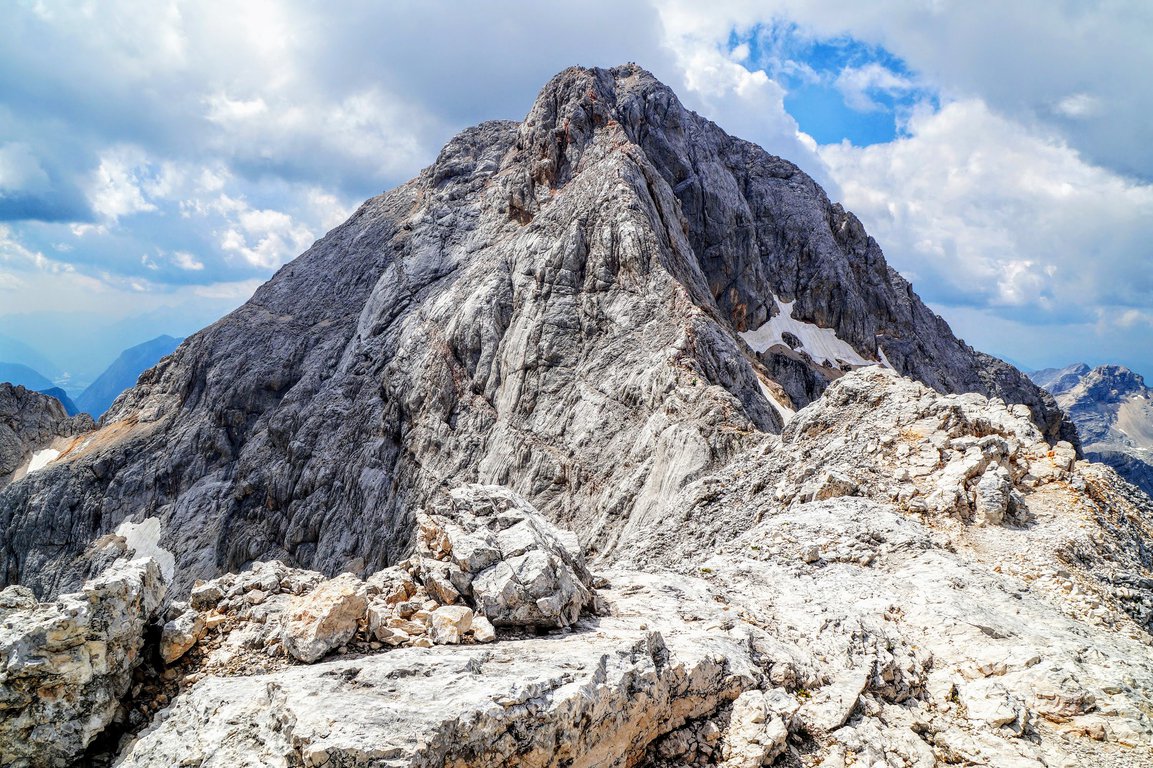
Route: Vrata Valley → Tominskova Pot via ferrata → Triglavski Dom na Kredarici shelter → Triglav → Triglavski Dom na Kredarici shelter → Pot Cez Prag via ferrata → Vrata Valley
Length: 15km
Time (breaks included): 16 hours
Difficulty: high
Height difference: 1850m
Triglav is the highest mountain in Slovenia - it reaches 2864 metres. It's located in Triglav National Park in the Julian Alps.
Slovenia is a tourist-friendly country and it includes also the Slovene mountains - there are lots of hiking trails and mountain huts in the Julian Alps.
There are several hiking routes leading to Triglav - a few easier ones (e.x. from Kot Valley and Krma Valley) and several via ferrata trails (e.x. from Vrata Valley).
Regardless of which option you choose the hike up will take about 7-8 hours. If there's a traffic jam near Triglav mountain top your ascend may get even longer.
Because of this fact hikers most often make their Triglav climb as a 2-day trip and stay in one of the nearby mountain shelters.
The most exciting option to climb mount Triglav is via ferrata trails. They are not only spectacular routes but also provide adventure seekers with a nice adrenaline rush.
The best option for hikers who look for a challenge are via ferratas which start in Vrata Valley (this valley is located near Mojstrana village in Kranjska Gora). There's a big parking lot at the beginning of the valley near Aljažev dom v Vratih mountain hut (1015 metres).
The height difference is significant (about 1850 metres) but it's totally worth it!
There are three via ferratas leading to Triglav:
- Pot Cez Prag - about 6 hours to get to the mountain top
- Tominskova Pot - a bit faster, 5.5 hour of climb
- Cez Plemenice - the most difficult one, takes about 7 hours to climb
All those routes require via ferrata gear (helmet, harness, climbing lunge with two carabiners and gloves).
My favourite trail is Tominskova Pot - it's the best one for ascending. Some points are technically difficult but it's very well secured.
Pot Cez Prag, on the other hand, is the most picturesque option. If you decide to climb down on Pot Cez Prag via ferrata you are guaranteed adrenaline rush - at the beginning of the route there is no iron cable to secure the path. I think the cable is necessary there as you need to pass a rock step.
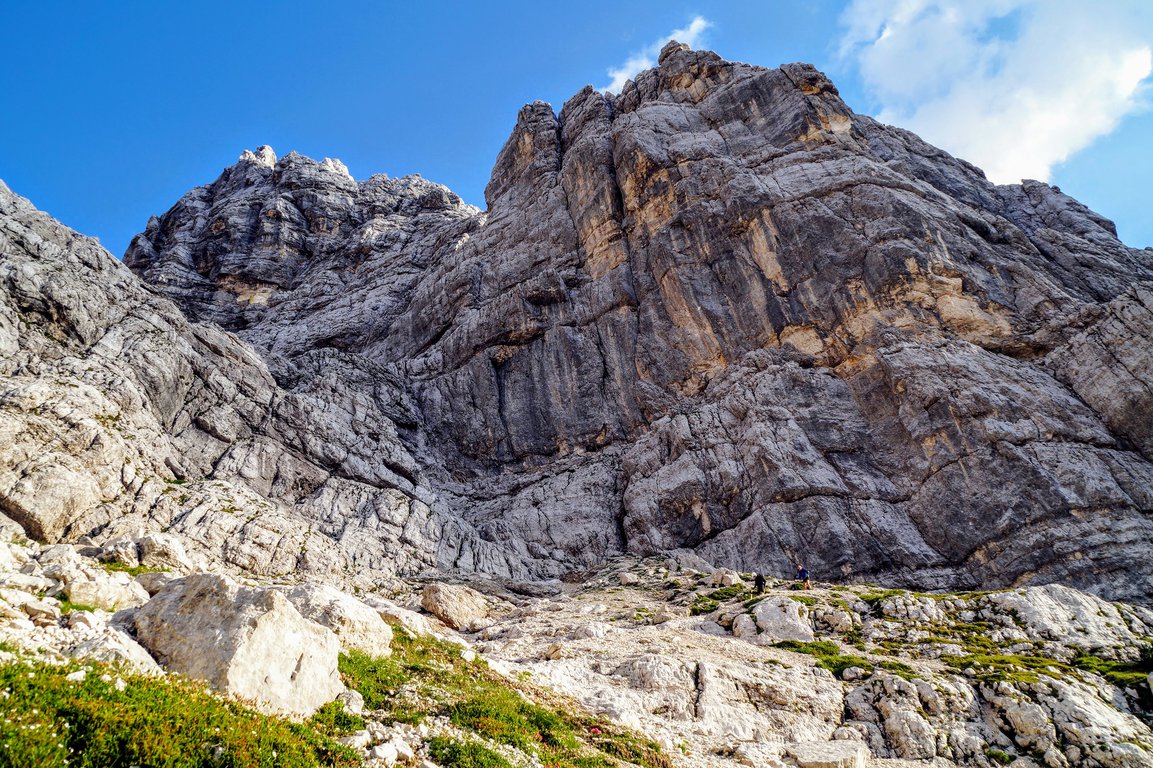
Anyway, the rest of this via ferrata trail is well-secured.
Both those routes merge before Triglavski Dom na Kredarici shelter. Now it's time to have some rest before your further ascend. There are restaurant and toilets in the mountain hut.
The next interesting point we pass is Mali Triglav mount (2725 metres). The steep wall of Mali Triglav seen from Kredarica shelter is astonishing!
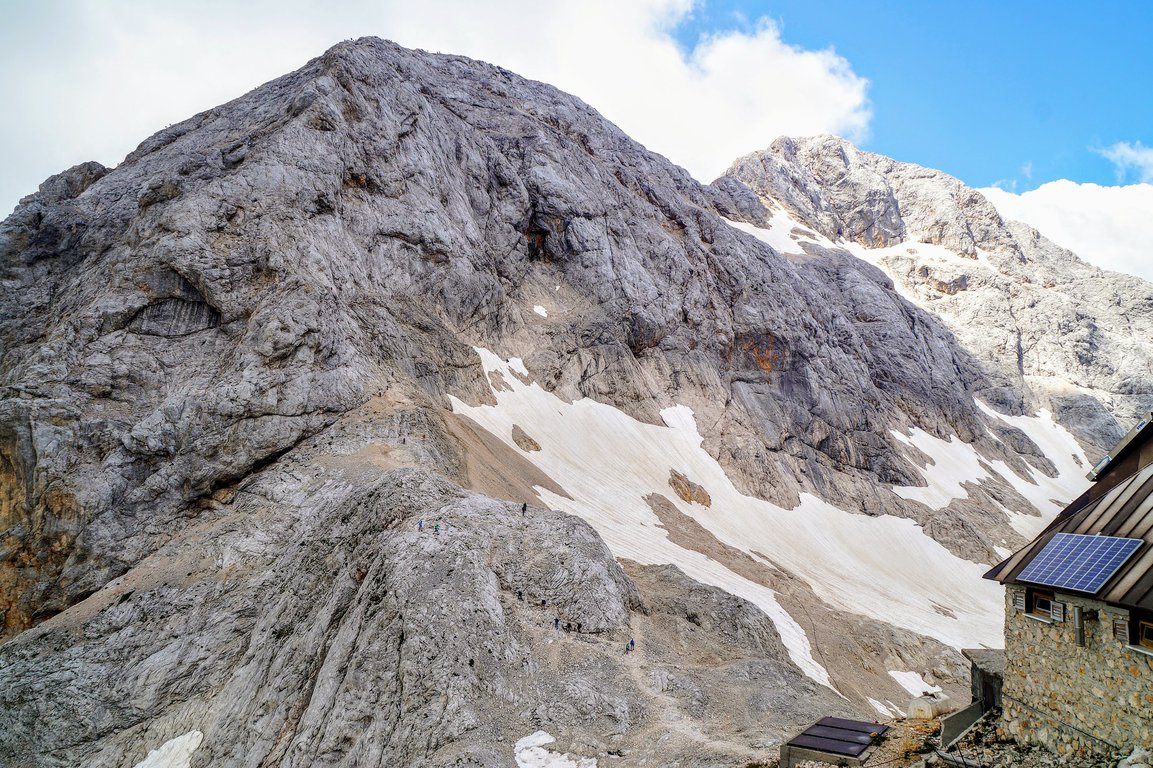
The hike from mountain hut takes about one hour, provided there's no traffic jam on the via ferrata (which in high season is very probable).
After you pass Mali Triglav the ascend is rather easy. You hike on the mountain ridge in the middle of which there's an iron cable.
On Triglav mountain top there's a characteristic steel shelter - Aljazev Stolp.
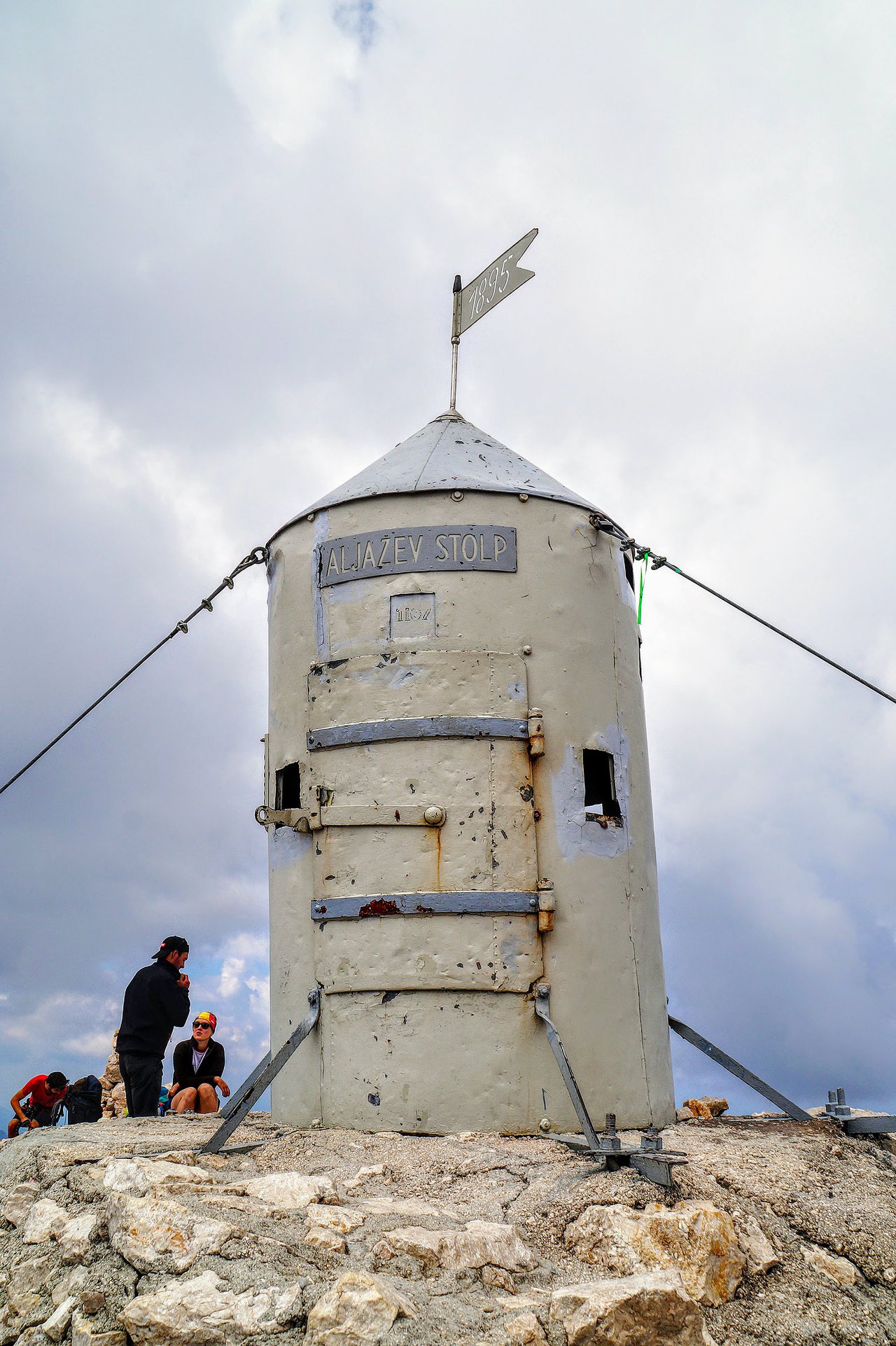
The panorama from mount Triglav is breathtaking! The view definitely rewards all the effort.
According to signposts descend from Triglav to Vrata Valley takes about 6 hours but it doesn't include breaks. If you plan to climb Triglav from Vrata Valley in just one day, it will take about 16-17 hours to complete. You need to start the hike very early in the morning (4:00 AM) and return after dusk.
Triglav mountain huts:
- Triglavski Dom na Kredarici - located on 2515 metres it's the highest mountain hut in Slovenia.
Phone: +386 4 531 28 64
Mobile: +386 40 620 781
E-mail: [email protected]
Website: https://www.pd-ljmatica.si/Cabins/24/Triglavski-dom-na-Kredarici - Dom Planika - located on 2401 metres on the southern side of Triglav.
Phone: +386 4 828 03 06
E-mail: [email protected] - Dom Valentina Staniča pod Triglavom - located on 2332 metres.
Phone: +386 4 828 03 00
Mobile: +386 (0)51 345 806
E-mail: [email protected]
PRO TIPS:
→ Approximate hiking times on the signposts in the Julian Alps don't include break times. It's worth to add at least one hour to each section when we plan the hike.
→ If you want to climb Triglav on via ferrata trails you need to come prepared. If you don't have via ferrata gear you can easily rent it in every bigger town in Slovenia, especially near Triglav National Park (e.x. KOFLER SPORT – sports agency. Address: Kurirska pot 20, 4281 Mojstrana).
→ The highest mountains are always the most popular. The same is with Triglav - hiking trails and mountain huts in Triglav National Park are crowded in high season. The best time to climb Triglav is the second part of June and September, although there might still be snow in higher parts in June.
→ Triglav mountain huts are open from June until September.
→ Venturing into high mountains requires proper hiking gear. Make sure you have all the hiking essentials to make your mountain trip as safe as possible.
To see more photos of Triglav National Park follow Roman on Instagram.
4. Mount KRN
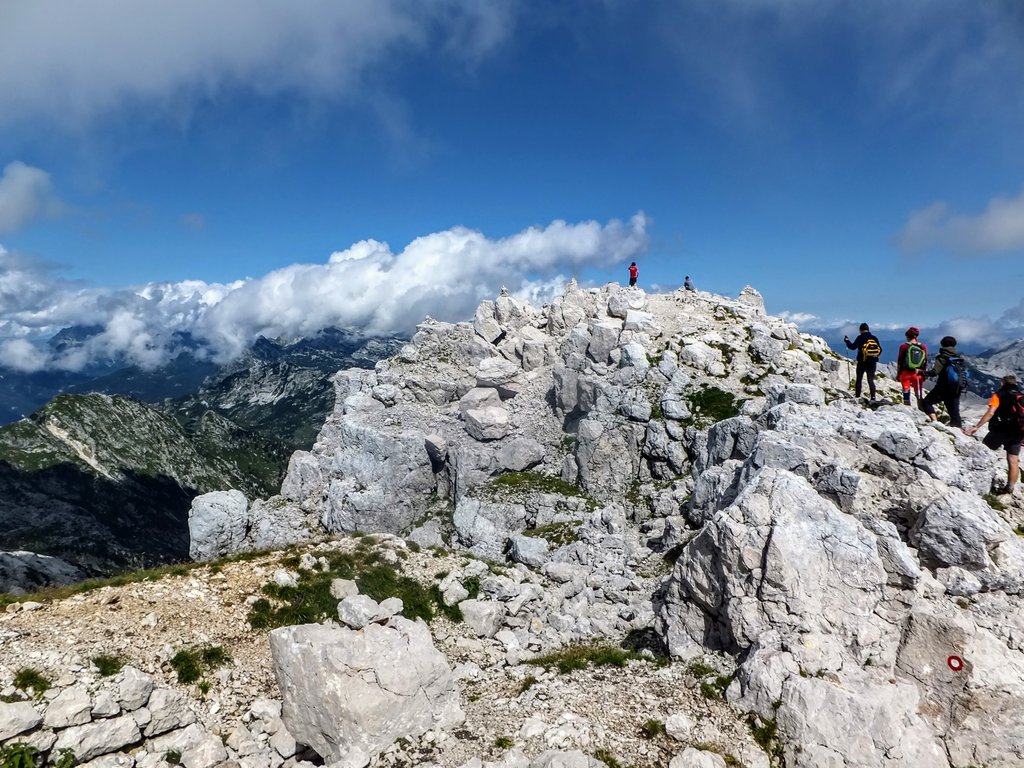
Route: Planina Kuhinja (KRN village) → Gomiščkovo zavetišče na Krnu mountain hut → KRN → Lepena Valley
Length: 15.5km
Time (breaks included): 7-8 hours
Difficulty: medium
Height difference: 1300m
KRN peak reaches 2244 metres and is one of the best Slovenia day hikes. Located in Triglav National Park is the most characteristic mountain in the Julian Alps. KRN is a solitary mountain which makes it prominent and visible from many places in Slovenia.
Actually, there are books are written about KRN mount. It is a symbol of Slovenia freedom during WW2 and the beloved mountain of many Slovenes.
Trailhead is in Lepena valley near Krn village. A narrow asphalt road rises steeply towards the village, where you continue onwards to Koča na planini Kuhinja mountain hut located on 1002 metres (follow signposts). You can leave your car right next to the hut on Kuhinja meadow (location is here).
The hike is technically easy but it gets quite steep at some points.
The first part of the path leads you along the forest. This part is nice and easy. Then you enter onto beautiful Alpine meadows. The trail gets a bit steeper but it's still very enjoyable to hike. There are lots of cows on the meadows and sometimes they block the trail.
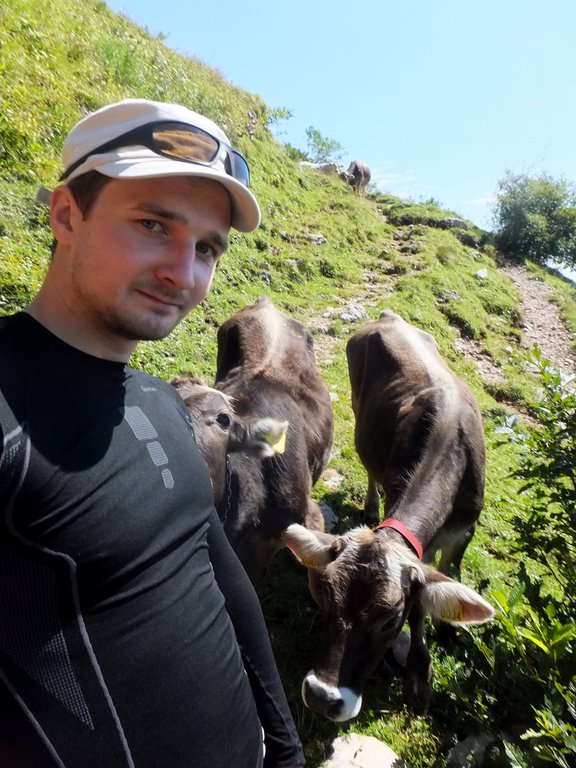
The trail gets steeper and rocky. When you approach Gomiščkovo zavetišče na Krnu mountain hut (2182 metres) it's time for a well-earned break. There are benches outside the shelter from which you get to admire the spectacular view.
Now is time for final ascend. Getting to KRN peak from the mountain hut takes about 15 minutes. The panorama from the mountain top takes your breath away - it's worth every effort!
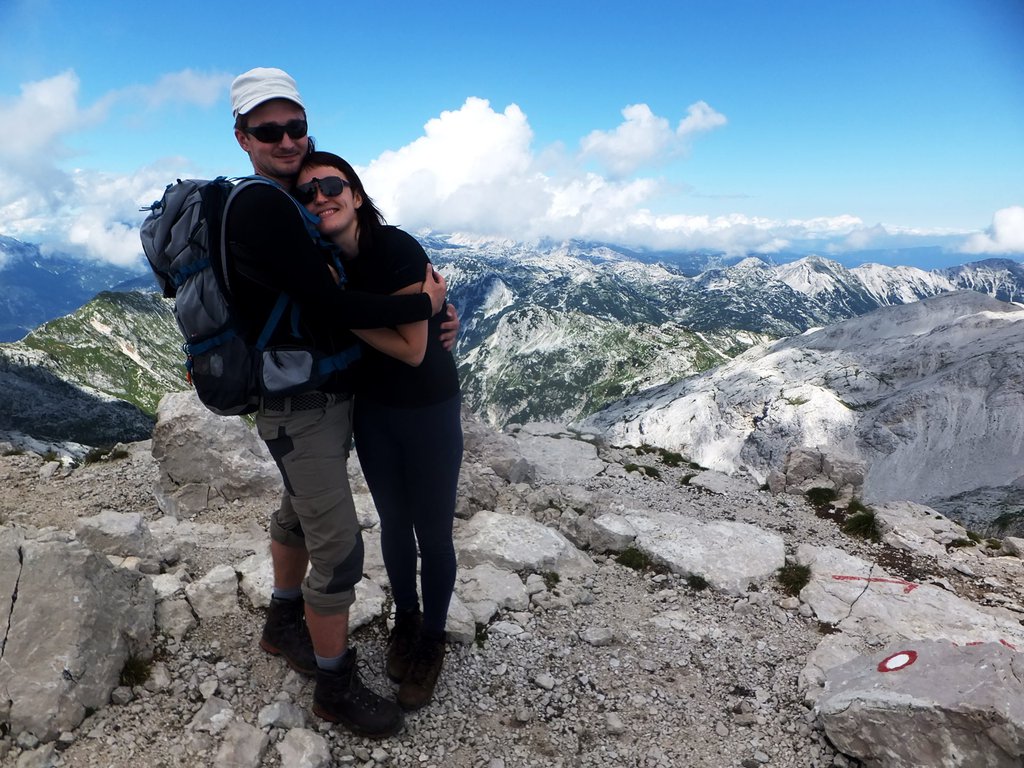
You climb down the same way back to Planina Kuhinja in KRN village.
I consider Triglav National Park one of the best places to hike in Europe. If you visit Slovenia, this natural gem needs to be on your bucket list.💚
PRO TIPS:
→ when you look at Slovenian words on maps you will find little v above c, s and z. This mark is called caron and it stands for ch, sh, and zh respectively.
→ KRN may not be the highest mountain in the country but the hike requires a good physical condition - the height difference is quite significant. Make sure you come prepared.
5. Postojna Cave
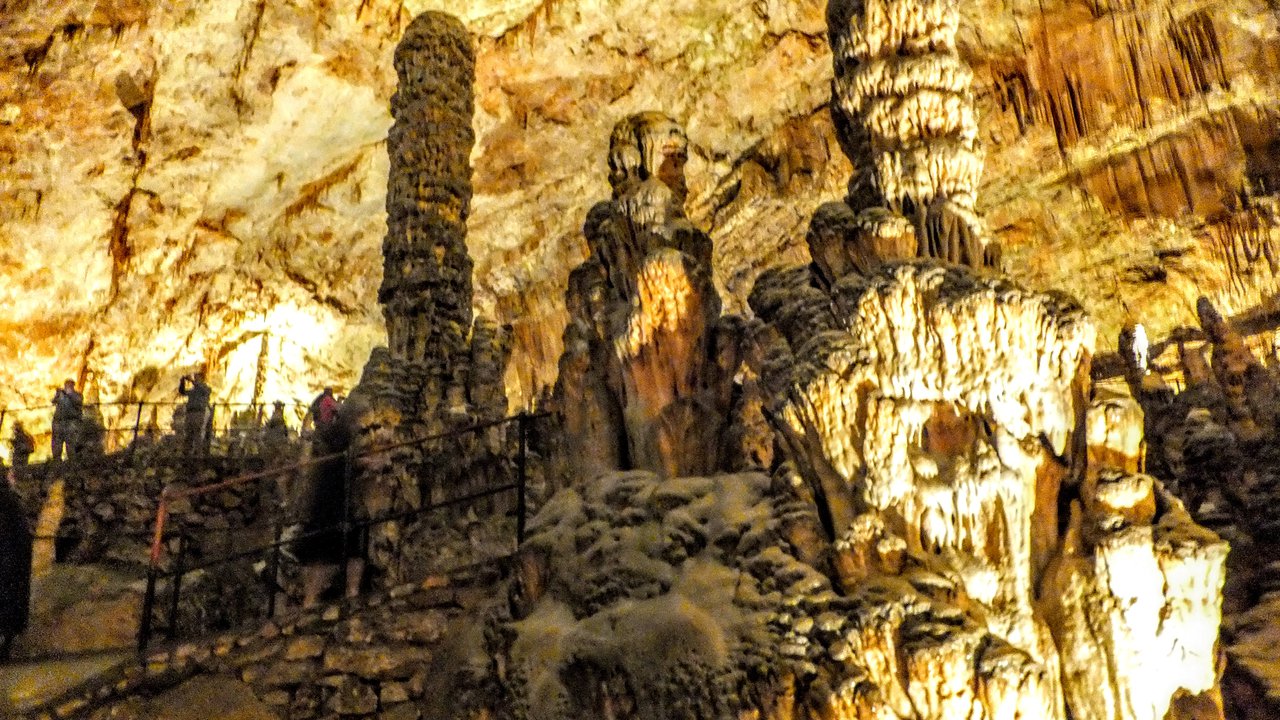
Postojna Cave is one of the best places to visit in Slovenia.
It's called The Queen of European Caves - Postojna Cave is one of the biggest and most visited karst caves in Europe. If I were to describe it in one word I'd say majestic.
Unlike Skocjan Caves, Postojna isn't on UNESCO Heritage List but I think it's more spectacular and attractive for tourists.
You start your visit with a ride in a cave funicular which is a lot of fun already. Then you start the walk.
The path leading along Postojna Cave is full of surprises. You start our visit in a massive grot with a Big Mountain. The cave passageway leads you through next chambers, the most impressive of them are White Chamber and Red Chamber (the names derive from dominant dripstone colours).
The cave formations are amazing!
Then you see the Diamond - eyecatching stalagmite, a symbol of Postojna Cave.
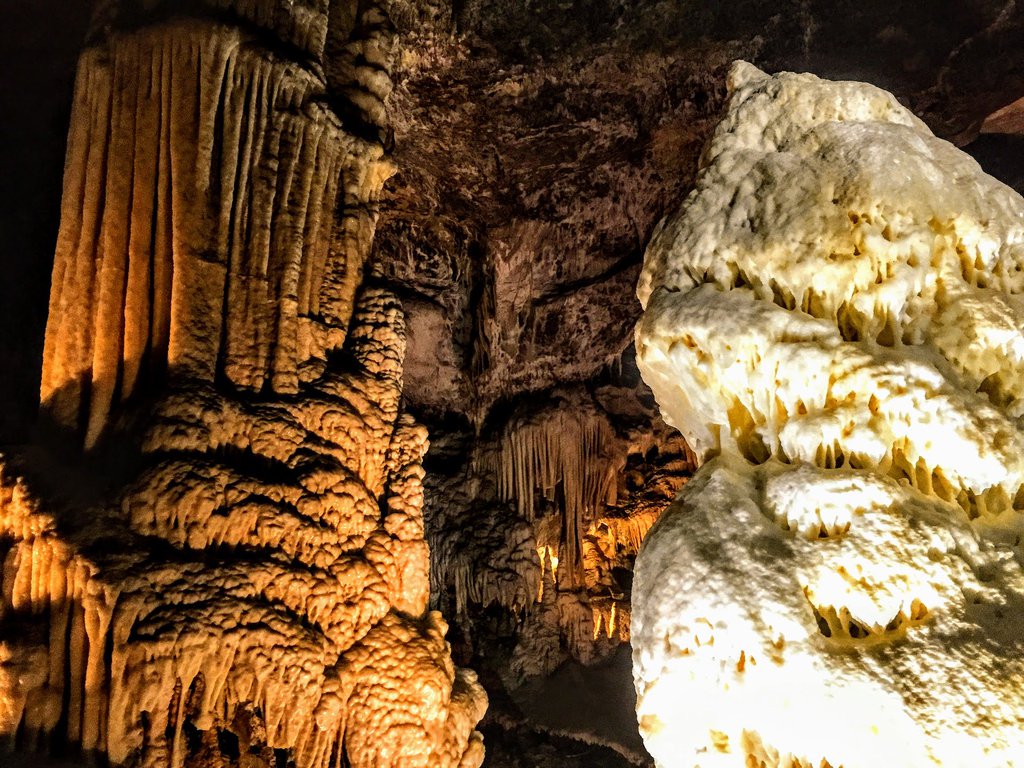
After admiring the Diamond you are directed to a basin with so-called human fish. Those are olms (Proteus anguinus) - aquatic salamanders which reach 20 centimetres in length. In the past, people consider them as small dragons.
Cave address: Jamska cesta 30, Postojna.
Parking address: Veliki Otok 1, Postojna.
Coordinates: 45.781079, 14.203025 (parking), 45.782518, 14.204315 (cave).
Parking cost (24h): car - 5 euro, campervan - 20 euro.
Opening hours: all year every day but Postojna Cave opening hours vary according to season. Check them here.
Best time to visit: the lines to the ticket offices are long in the summer so it's a great place to visit if you travel Slovenia in spring.
Time of visit: about 2 hours.
Postojna Cave isn't only a must-see for caves aficionados - it's one of the best tourist places in Slovenia!
Many visitors consider it the most astounding cave in Europe and they are right - rich dripstone formations, massive size and additional tourist attractions make Postojna Cave one of the top destinations in Slovenia.
6. Predjama Castle
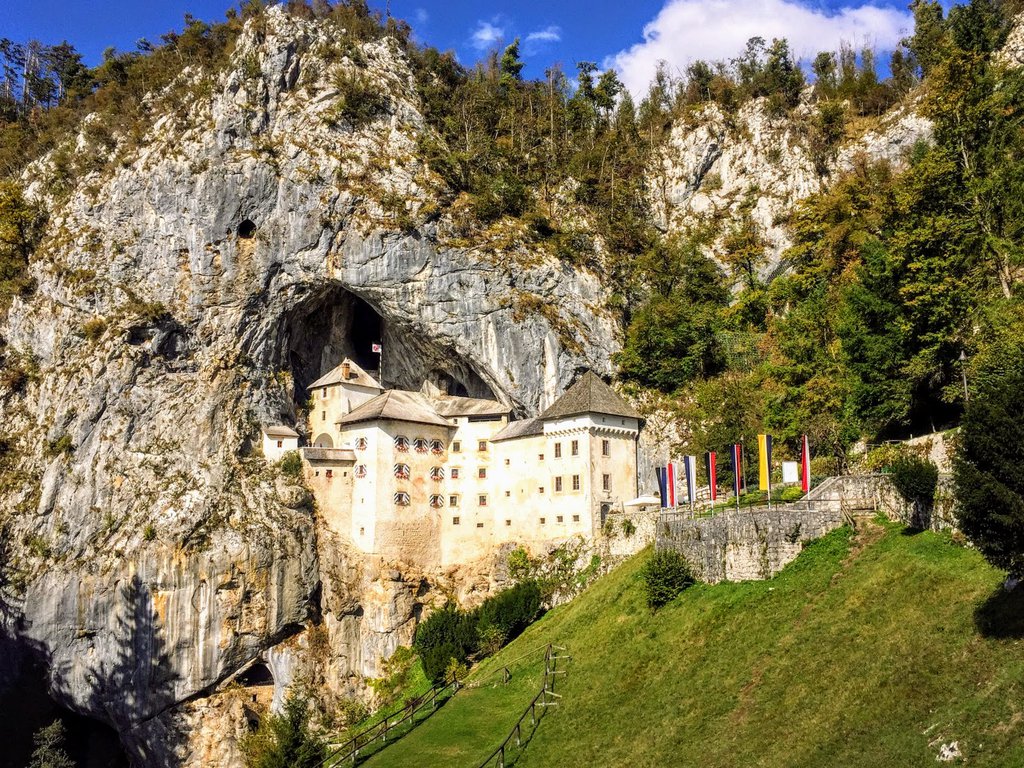
When you're in Postojna, it's also worth to visit Predjama Castle - it's only 9 kilometres from Postojna Cave.
This impressive Renaissance castle is one of the most beautiful Slovenia landmarks. It's also the largest cave castle in the world!
The beginnings of the castle date back to the 12th century when the first stronghold was built right next to the cave's entrance. The cave in which Predjama Castle is built was excellent protection from invasions.
In the next centuries, the castle was repeatedly expanded. The last big upgrade of the castle was in the 16th century.
Predjama Castle is stunning from the outside but it's also worth to visit the interiors - visitors can see how the clever constructors used natural rocks to fit in the castle walls.
A walk in the castle is much better than the majority of my history lessons. If you visit Slovenia with kids, then Predjama Castle is definitely a must-see.
There is a museum presenting medieval exhibits. Visitors get to explore the old corridors, chambers and passages. There's also a torture chamber, chapel, priest room and armoury full of weapon replicas used in medieval times. All those exhibits show the history of Predjama Castle as well as the life of its residents.
It's also possible to walk in the secret passage from the cave to the castle which was used by Erasmus of Lueg during invasions.
Erasmus of Lueg was the most famous host of Predjama Castle - baron and robber, he cleverly used the underground grots to get food and weapons to the castle. He's renowned in Slovenia to withstand the imperial army's siege of the castle for over a year.
PRO TIP: to get the most of your visit in Predjama Castle, learn about its history and get skip-the-line tickets, it's best to take a guided tour. You can combine it with Postojna Cave which saves you time and money. Pick-up service and transfer from the cave to the castle are included.
7. Soča River
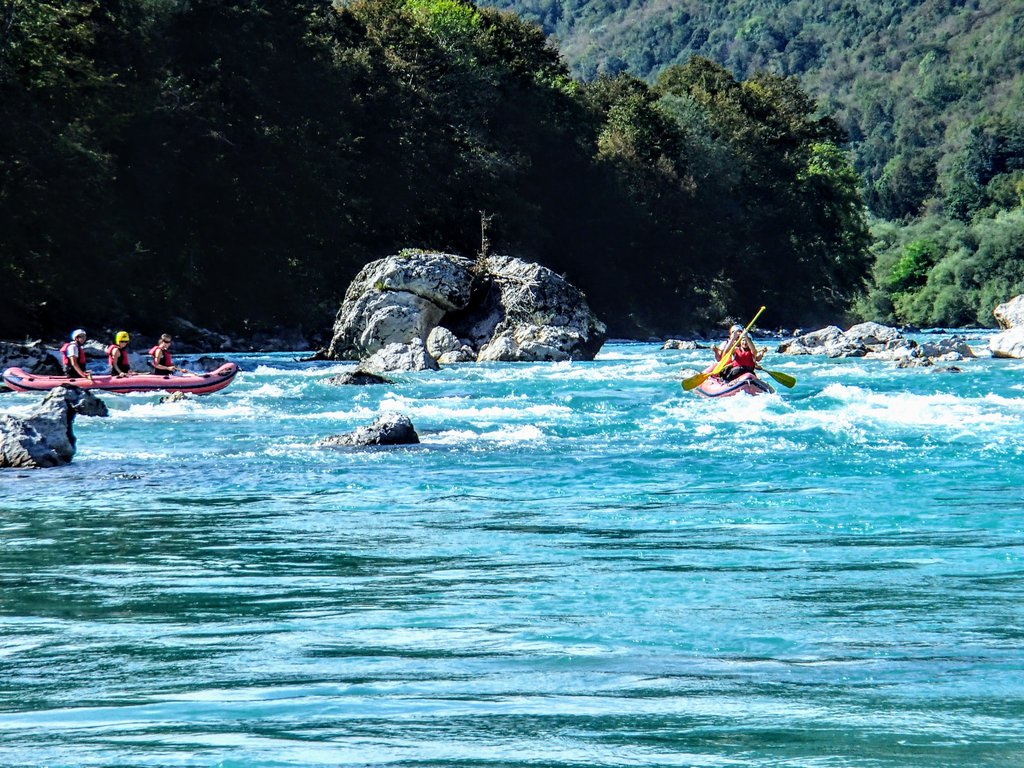
Soča river is the most beautiful river in Europe (at least I haven't seen a more spectacular river than Soča😉). This Alpine river is famous for its turquoise colour and loved by beachgoers and water sports enthusiasts.
If you're looking for a nice beach to sunbathe, relax and have a picnic, you can try below beautiful spots:
- Cezsoca - quite a popular place but worth it. There is a big parking lot and a small beach next to the bridge. Bar with snack and drinks nearby.
- Kamp Koren in Trnovo ob Soči - another beach with parking and snacks. Located near Kamp Koren in Trnovo ob Soci. Also rather a popular spot in the summertime.
- Beach near Pension Kamp Klin - address: Lepena 1, 5232 Soča. Small but beautiful and definitely peaceful place.
Just remember, Soča river is of Alpine origin which means it's cold, even in the summertime. If you would like to swim, then Lake Bled would be a better option.
Rafting on Soča river is one of the most exciting things to do in Slovenia. If you pick the right spot then everyone can go rafting with you - your kids, mother-in-law or whomever you wish to take with you 😉. Soča river reaches 140 kilometres in length so there are spots for all kinds of adventure seekers.
If you want to feel the adrenaline, then Bovec town in Soča valley would be the best place to go - it's one of the best Slovenia mountain resorts.
In wintertime Bovec is a ski resort, in the summertime, it's a starting point for climbing routes and bike trails.
There are also many hiking trailheads near Bovec. Bovec airport is famous among paragliders. Soča river which flows through the town gives an opportunity for mountain kayaking and rafting.
However, to stay on the safe side and enjoy your rafting adventure, it's best to use water sports agency. They offer necessary gear and advise where you can start your escapade based on your experience and skills.
The most popular water route is 10-kilometre long and starts nearby the Log Čezsoški bridge, right next to Boka waterfall. It finishes in Trnovo ob Soči village.
If you would like to try other sports - no problem! You can rent kayaks or canoes. For adrenaline rush try canyoning or river bugging. There are so many options to enjoy your time on Soča river!
8. Vintgar Gorge
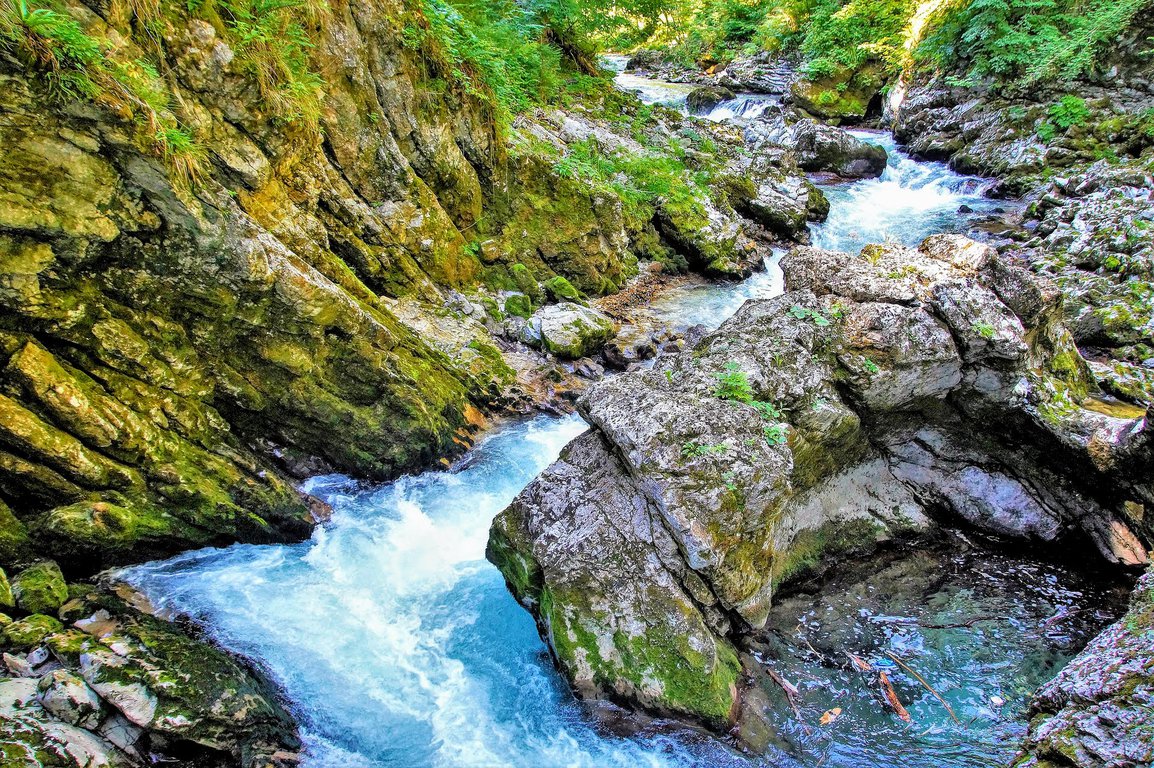
This scenic wonder is one of the best natural places in Slovenia .
Vintgar Gorge is 1.6 kilometres long and very deep - its maximum depth reaches 100 metres at some points! Visitors walk on a comfortable boardwalk which runs over the Radovna river. The trail leads us along the ravine, up and down and crossing the river so that you get to know well this natural wonder.
It's also an educational experience - you admire many different rock formations carved in limestone as well as abundant flora of Julian Alps. Waterfalls, basins, cascades, crystal pure water - Vintgar Gorge is a Slovene natural gem.
We finish our walk near 13-metre high Šum waterfall - the biggest river waterfall in Slovenia. We have two options to get back:
- return the same way - one-way walk in the ravine takes about 30 to 40 minutes
- hike on a marked trail leading uphill towards the gothic church of St Katherine in Zasip village and then down the slope of Hom hill to the parking lot. This option is one hour longer but worth the effort - your trip will get even more interesting as there is amazing view on Triglav National Park and Bled Lake from Zasip village.
Visit in the ravine is also one of the best day trips from Bled - it's only 4 kilometres from Bled.
Getting to Vintgar Gorge from Bled is very easy:
- car - numerous signs will lead you straight from Bled centre to Vintgar Gorge. It takes only 10 minutes to get there.
- self-guided e-bike tour - 4-hour tour from Bled. Ride an e-bike and customise your trip to fit your interests. All necessary gear and map are provided. Skip-the-line ticket included.
- 1 EUR shuttle bus - itinerary: Bled - Koritno - Bodešče - Ribno - Bled Castle - Spodnje Gorje - Vintgar Gorge - Zgornje Gorje - Krnica (Pokljuka Gorge, Radovna Valley) - Zatrnik. In the summertime, there are 6 shuttles per day. Autumn, winter and spring - 4 times a day.
- private bus - transfer takes about 15 minutes. Bus shuttles are every day from April until October. A return ticket costs 10 EUR. The bus leaves at Mamut Tourist Agency in Bled. The drawback is that you only have 2 hours to explore Vintgar Gorge and if there is a long line to the ticket office you will have to hurry up.
Ticket prices:
Adults: 9 EURKids 6-15 year old: 3 EUR
Kids up to 6 years old: 1 EUR
Students: 6 EUR
Important facts:
- credit cards aren't accepted at Vintgar Gorge ticket offices, cash only
- the ravine isn't suitable for baby carriages or wheelchairs
- the queue to the ticket office is especially long before noon. If it's possible, visit Vintgar Gorge in the afternoon or book in advance to get a skip-the-line ticket.
- visit in Vintgar gorge is one of the most relaxing things to do in Slovenia!
9. Skocjan Caves

This breathtaking natural wonder is listed as UNESCO Heritage since 1986. Thanks to this fact Skocjan Caves are top tourist attractions in Slovenia but still not as popular as they deserve.
The caves captivate their visors from the first sight. Because of specific microclimatic conditions original ecosystems developed in the caves. The majority of fauna and flora in Skocjan Caves is endangered - because of this fact, tourists can explore only six kilometres of cave tunnels.
The most beautiful element of Skocjan Caves are stunning karst formations: hollow and very deep holes filled with water, natural bridges, gorges, impressive stalagmites, falling valleys and passages covered with sediment.
In Skocjan Caves there is the longest in Europe underground canyon. Visitors also get to admire massive chamber (Velika Dvorana) which is 30 metres high and 12 metres wide!
There are three routes available to choose from:
- Underground Canyon - open all year round. Available only with a guide. Visitors get to admire Globočak valley, Tiha Jama Cave from which there's view on river Reka canyon, Cerkvenik - natural bridge located 50 metres above river Reka, Tominceva Jama Cave and a waterfall in Velika Dolina Valley. Definitely the most interesting option in Skocjan Caves.
- Underground Reka river - available from April until October. The route leads along the river and the walk lasts about one hour. The start is near the natural entrance in Škocjan village. The path runs next to the river through Mala Dolina Valley. Visitors get to admire the bridge Velika Dolina Valley and Tominceva Jama Cave.
- Educational trail - perfect for families with kids as it includes lots of information about the flora and fauna of Skocjan Caves, its history and geological process. Ticket to educational route includes also visit in the museum exhibitions in Škocjan village (10-minute walk from the Information Centre). It's a guided route and it has to be booked at least 2 weeks before the visit.
If you look for cool things to do in Slovenia, Skocjan Caves are just for you!
Since the temperature in the caves is the same all year and you can still enjoy the trip even on a rainy day, Skocjan Caves are a perfect option if you visit Slovenia in spring.
10. Zelenci springs
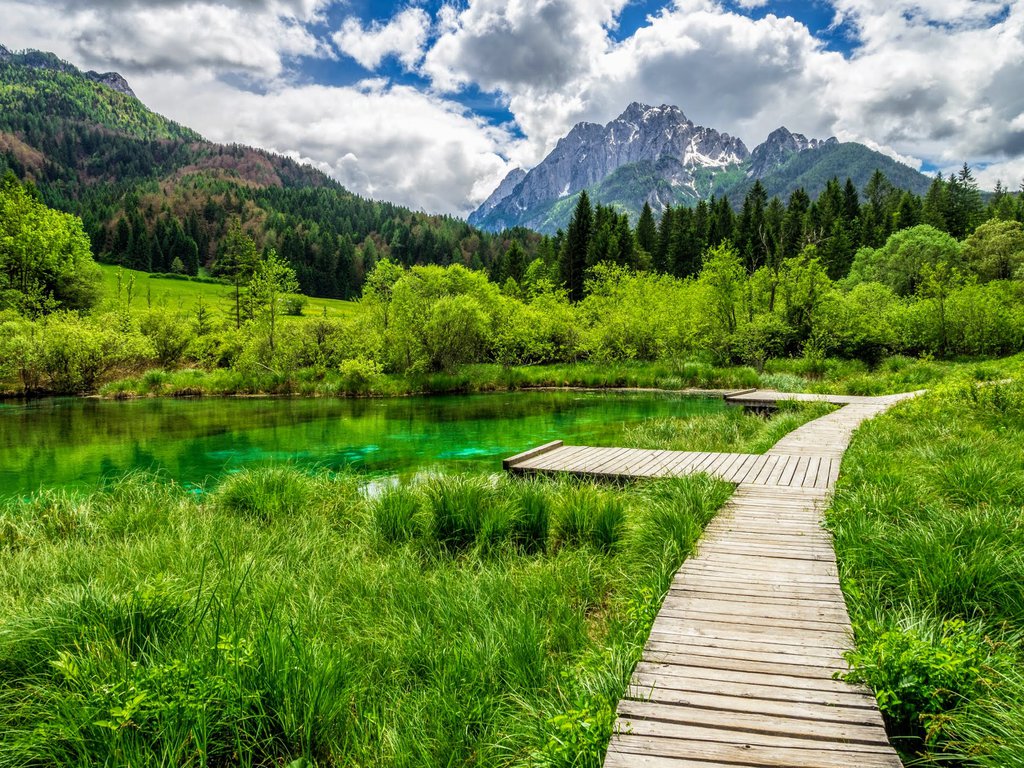
Zelenci Nature Reserve is located 5 kilometres from Kranjska Gora, right next to road no 202 which leads to Italy. It's perfect for a trip from Austria or Italy - it's very close to the border.
Zelenci Nature Reserve is 1200 metres long and about 150 metres wide (about 15 hectares in total). It's a small natural wonder of Slovenia, perfect for every nature lover.
There's a parking lot about 500 metres from Zelenci Nature Reserve. After a short walk in the forest, you get to the wooden boardwalk. It leads through the picturesque heathland and Drni Wetland to the viewpoint and Zelenci lake. Surrounded by the Julian Alps, Zelenci definitely falls into the category: beautiful places in Slovenia which you need to visit.
Zelenci lake is emerald green and it never freezes even in very low temperatures. It has a stable temperature of 6°C because of underground hot springs which flow into this lake.
Another advantage of this place - currently there's no entrance fee to Zelenci Nature Reserve and I consider it one of the best free things to do in Slovenia.
When you're so close to Kranjska Gora it's worth to visit Lake Jasna. Located just 6 kilometres from Zelenci it attracts visitors with amazing landscape and well-developed infrastructure. Close to the Lake Jasna there's a recreational area with beaches, boardwalks, benches and bridges.
If you wonder what to see in Slovenia in winter visit Lake Jasna and Zelenci - the view gets even more interesting when everything is covered in snow.
11. Lake Bohinj
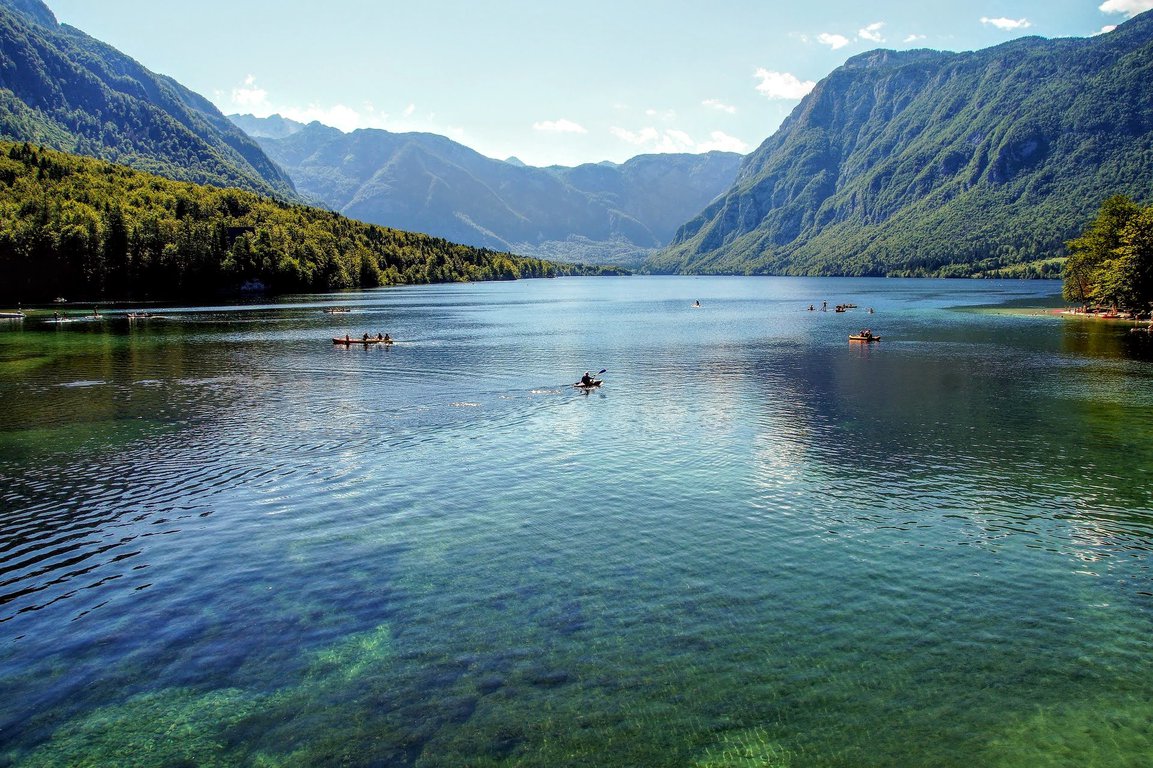
Everyone knows Lake Bled but there's also another beautiful but far less popular natural wonder - Lake Bohinj. Located just half an hour drive from each other, Lake Bohinj is one of the best day trips from Bled.
The lake is situated in Triglav National Park on 526 metres and it's the biggest and also the deepest postglacial lake in Slovenia. Surrounded by steep mountain slopes covered by forests, it's one of the best places to see in Slovenia.
Interestingly, Lake Bohinj isn't the only lake in the area - there are seven other picturesque lakes near mount Triglav.
I highly recommend to hike around the lake - the trail is 12-kilometre long (7.5 miles) and amazingly beautiful! Many consider it one of the best hikes in Slovenia. On your way, you can visit charming Ribčev Laz village and Church of St John the Baptist - interesting sacral building which combines Roman, Gothic and Baroque styles.
If you prefer water sports you can rent a rowing boat or kayak. There are also boat cruises organized on the lake. It's also a great starting point for hiking trips - there are several trailheads near the lake. You can buy maps with hiking trails in local shops.
Bohinj municipality is an interesting area - it's over twenty small villages dispersed in the mountain valley. It's a paradise for nature lovers - Bohinj is a peaceful and quiet region. Its residents say that it's not a place for people looking for big hotels, lively cafes and bustling tourist resorts.
12. Savica waterfall
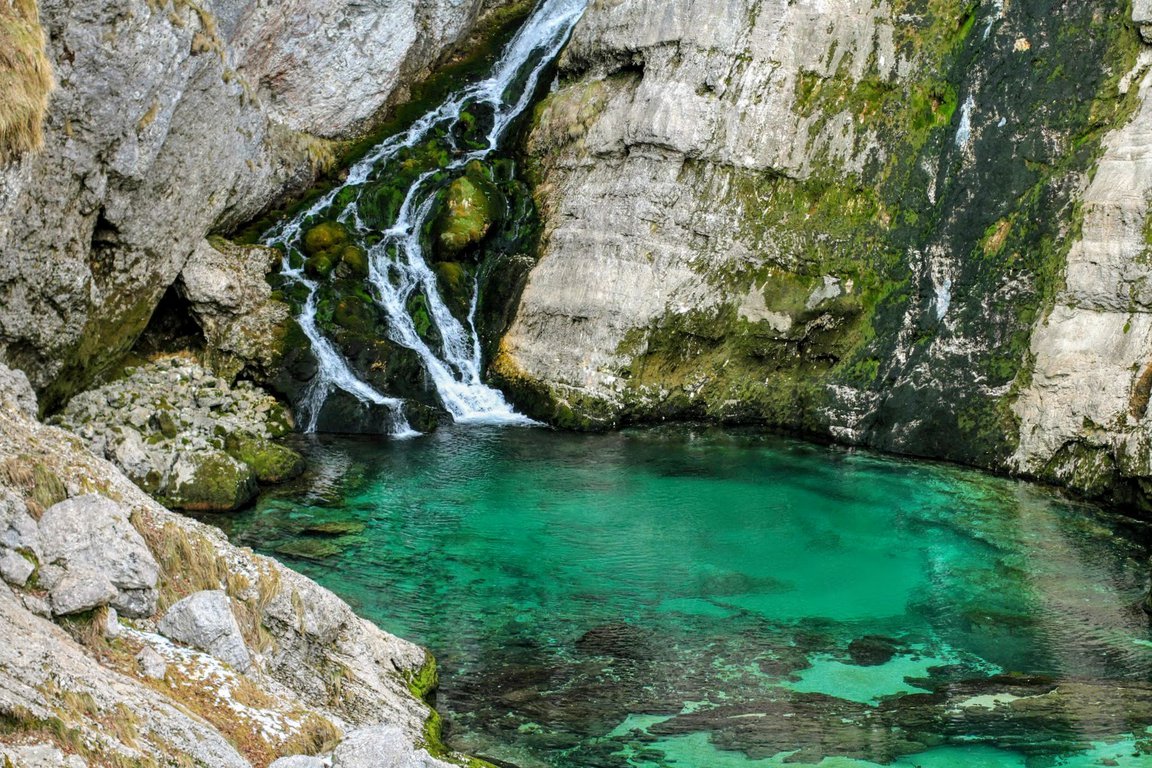
If you decided to visit Bohinj, then you might want to go to Savica waterfall too - many nature lovers consider it one of the most beautiful Slovenia waterfalls.
The most astounding characteristic of this waterfall is the colour of the water - it's green. Not a green shade of blue - a beautiful green-emerald colour (I'm definitely not a colour expert 😉) which I haven't seen anywhere else.
Savica waterfall is located at the end of Bohinj Valley in a small village of Ukanc. It's created by water coming from Črno Jezero Lake situated 500 metres above the waterfall. The lake water divides Savica into two waterfalls - higher one reaches 78 metres and the lower one is 25-metre high. Then, water from Savica waterfall flows to Bohinj lake.
Getting to Savica waterfall is very easy and there are two options:
- by car - drive along Bohinj Lake to the village of Ukanc (the road is well-marked). There's a big parking lot at the end of the road. The parking costs 3 EUR for 3 hours. Admission fee to Savica waterfall costs 3 EUR for an adult (kids under 6 years of age get free entrance). There's a marked path near the parking. After about 20 minutes of uphill walk, you get to a wooden viewpoint from which you get to admire not only Savica waterfall but also Bohinj Valley. The view is definitely worth the walk!
- by foot - hike along the marked trail from the closed Zlatorog Hotel (location here). The walk to the parking under Savica waterfall takes about one hour.
13. Piran
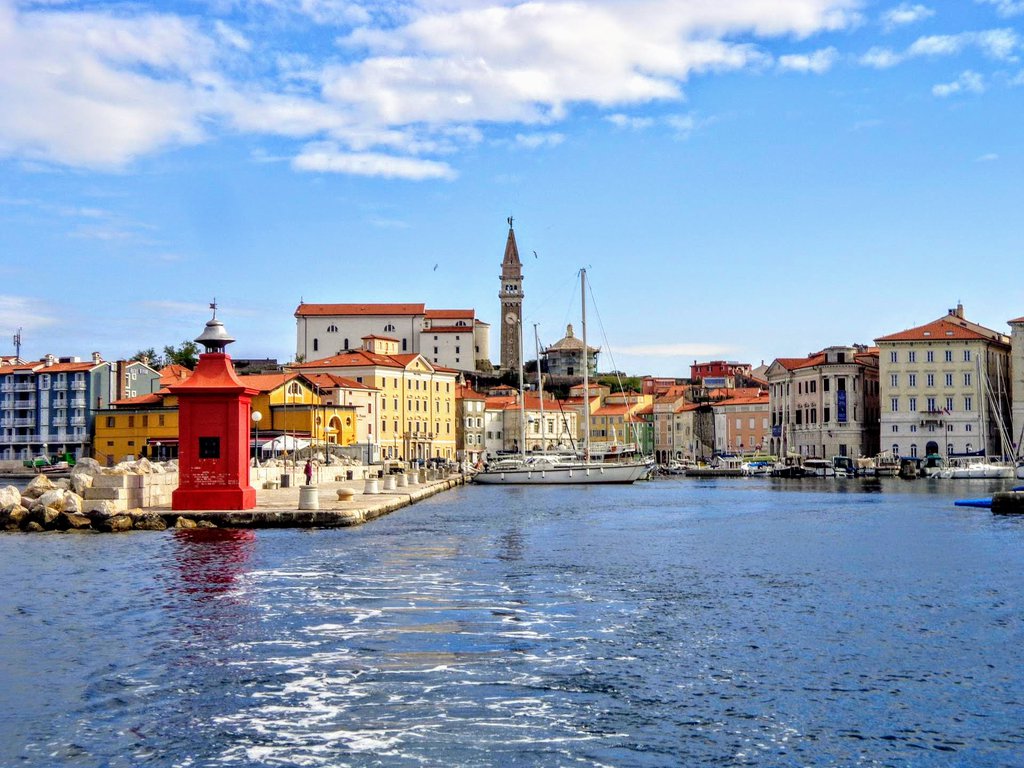
Koper, Izola and Piran are sometimes called Slovenia's Tricity - they are located about 10 kilometres from each other. They are beautiful sea resorts and beachgoers consider them the best resorts in Slovenia.
Let's focus on Piran here - a charming seaside town which attracts visitors with its sandy beaches and Venice-like architecture.
The most exciting attractions in Piran include:
- Barbican (Piran town walls) - the oldest part of Piran was surrounded by Barbican as early as in the 7th century. It divided the town into three parts. Walls of Piran grew together with the town including more districts - in the final part (16th century) the outer defensive walls surrounded whole urban peninsula. Today visitors can admire eight defensive towers, most of them built in baroque style. Piran town walls are the number one attraction in this charming sea resort.
- Giuseppe Tartini's house (Tartinijeva hiša) - the oldest building in Piran. Currently, it's a place of cultural meetups, exhibitions and art workshops. There's a small museum on the first floor where visitors can get acquainted with the life of Giuseppe Tartini.
- Apollonio Palace (Palača Apollonio – Zaccaria) - a beautiful baroque building which shows the ambitions of Piran rich residents. Interior is strongly influenced by Venetian style.
- St. George's Church - this impressive sacral building dates back to the 12th century. It was renovated in 1637 in the Baroque period. It's a real treat for art lovers - lots of beautiful statues and wall paintings. St. George's Church is strongly influenced by Italian art and architecture which is especially noticeable in the belfry which is a copy of St Mark's Campanile. The cathedral is an excellent viewpoint - when the weather is nice visitors can even admire the Julian Alps and Dolomites.
- Venetian House (Benečanka) - eye-catching house built in Venetian Gothic style. It dates back to the 15th century. Richly ornamented, it surprises with the precision the ornaments were done.
- Tartini's Market (Tartinijev trg) - the cultural centre of Piran. Surrounded by marvels of European architecture: St Peter's Church, Piran Town Hall, Courthouse (Sodna Palača).
- Aquarium - a perfect place for families with kids and biology enthusiasts. 🙂 There are about 200 marine species. In high season the aquarium in Piran is open every day from 9 AM to 7 PM. In the winter it's closed on Mondays.
Piran parking (Garažna Hiša Fornace)
The only reasonable place in Piran to leave your car. One hour costs 1.2 EUR. Located about 10-15 minutes on foot from Piran centre. There's also a free bus shuttle right next to Piran parking which takes passengers to the centre.
Leaving a car near the town square is practically impossible. It not only costs 5 EUR per hour, but there's also very little space - selected Piran residents take every possible spot.
14. Izola
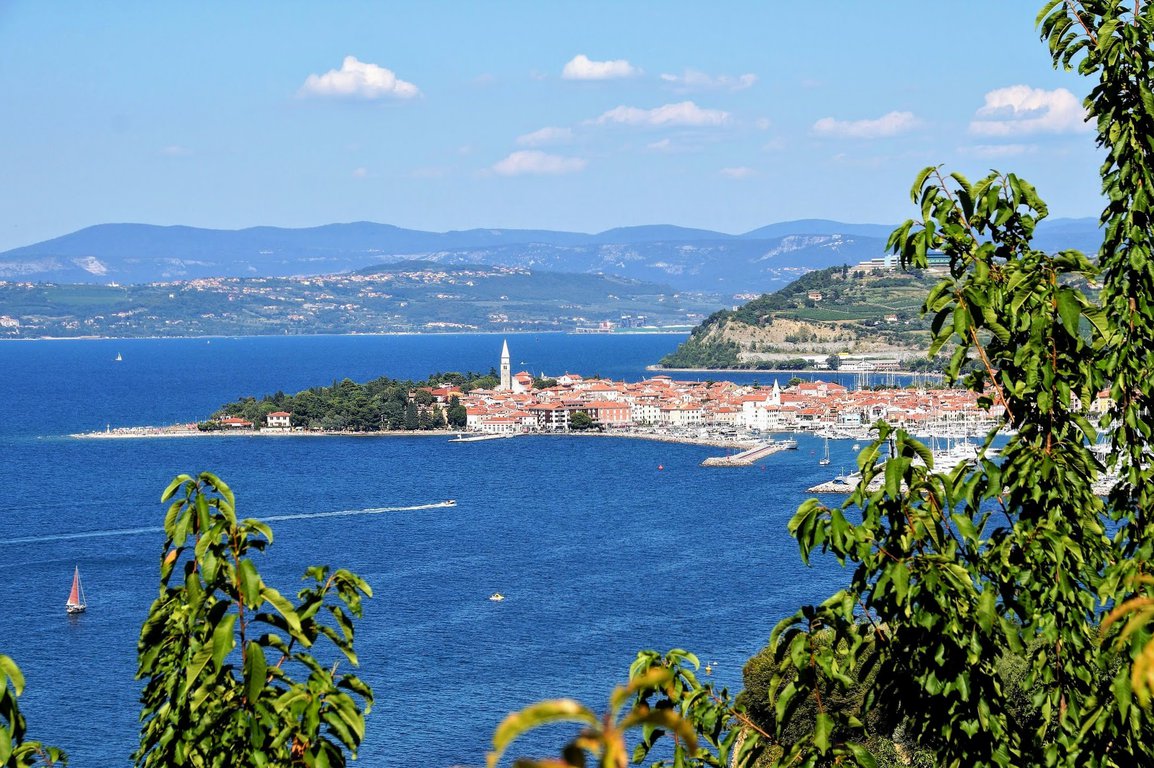
Izola is a charming Adriatic resort located just 10 kilometres from Piran. If you love the sea and beaches, Izola will be for you one of the best resorts in Slovenia.
It's also a paradise for seafood lovers - fish and seafood are always fresh here, served in great variety and available on every corner. Fish soup is served practically in every restaurant. Fried sardines are the most delicious at street stands.
Izola is also a perfect place for evening walks and photoshoots. Labyrinth of narrow stone streets, lots of antique buildings and romantic seashore - the atmosphere of Izola is enchanting!
The best tourist attractions in Izola:
- St. Maurus's Parish Church - the most prominent church in Izola. The church was renovated for a number of times, yet it was possible to preserve its beautiful style. The baroque interior boasts 10 altars, antique organs and many original paintings (the oldest one dates back to the 15th century!). The 30-metre church tower is built from Istria stone in Gothic style.
- Besenghi degli Ughi Palace - the best preserved Gothic palace in Slovenia. This impressive three-storey building was designed by famous architect Filippo Dongetti and built in the 18th century
- Manzioli and Lovisato Palaces - Manzioli Palace is one of the oldest monuments in Izola - it was built in the 15th century. It's an eye-catching example of Venetian architecture. There are art exhibitions available for visitors in Mazioli Palace. Opposite the Mazioli Palace, there's another historical building - Lovisato Palace.
- Trg Padlih - a war memorial which commemorates soldiers and fascis victims who died in WW2
If you prefer the beach, then choose Izola. If you like sightseeing and architecture, then go for Piran.
15. Koper
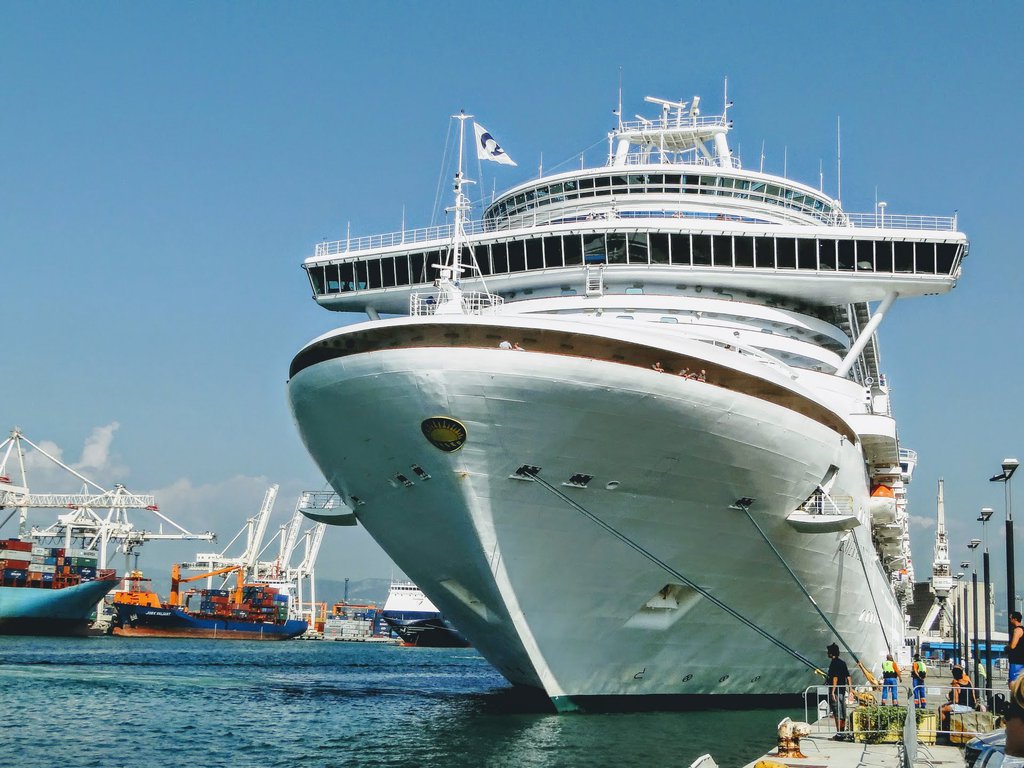
Koper is the largest town on Slovenia coast and the capital of Istria region. It combines modernity with history - the modern seaport is situated just a 15-minute walk from Koper Old Town.
When you start exploring narrow streets in Koper you will feel as if you're in a small Italian village. For many years Koper used to be handled by Italians which is noticeable on every corner. There are many lion sculptures (symbol of Venice), Venetian-style houses and charming squares.
The best way to explore this sea resort is to start with a walk along the promenade and go towards Koper Old Town. There are many little streets joining the promenade with Old Town but let's firstly walk to the sea.
The view is beautiful - there is a boat and yacht harbour and the sea meets majestically with hills. There are many flower beds, souvenir stands and ice-cream shops (you can even buy Red Bull flavoured ice cream there!).
Koper port
Right next to the promenade there is an enormous port. It may not be the most beautiful in the world but it's the only port in Slovenia and very important place for international travellers who prefer sea transport.
Main attractions in Koper:
- Titov Square - the most beautiful place in Koper. Built in the 15th century it's Koper largest square. It's surrounded by the most important sights: Pretorian Palace (today's Town Hall), Foresteria and Armeria Palaces, Assumption Cathedral (Gothic-Renaissance sacral building from the 15th century), antique tower with viewpoint (fantastic view on Koper and sea!), John Baptista Rotunda (dates back to the 12th century!). Those are all beautiful antique landmarks of Koper.
- Carpaccio Square - named after Vittore Carpaccio, a famous Italian painter. There's an eye-catching Carpaccio House on the square - very characteristic violet building.
- Prešeren Square - another beautiful place famous among Koper visitors. A must-see monument is Da Ponte fountain - built in the 17th century, its shape resembles Rialto bridge in Venice. In Prešeren Square there's also St. Bassus's Church and Vrata Muda - town gate. Vrata Muda is the only town gate left in Koper.
Koper Old Town is definitely worth a visit. Its characteristic slow atmosphere makes you feel as if you were in Italy but there are definitely fewer tourists (they often prefer to visit Venice and Piran).
The best time to visit Koper is the end of summer. Local government organizes Yellow Night Festival - the largest coastal summer festival in Slovenia. Spectators can admire fireworks, shop at fairs and admire local artists' performances.
Koper parking
The best place to leave your car in parking on Semedelska Cesta street. It's quite a big parking lot located just a few-minute walk from Koper Old Town, right next to a small shopping centre. On weekends the parking is free of charge.
Best hotels in Slovenia
Where to stay in Slovenia? Well, there are lots of great places to stay in Slovenia but the best ones are:
- Bled - for travellers who want to stay in a beautiful tourist resort.
- Bovec - for mountain and water sports lovers.
- Ljubljana - for city people who are especially interested in sightseeing.
→ BLED
Lake Bled is one of the best tourist places in Slovenia. If you would like to stay close to this natural landmark, you might want to consider the already mentioned hotels:
Garni Hotel Savica - Sava Hotels & Resorts - located 250 metres from Lake Bled in a quiet area. The hotel offers free entrance to thermal pools at the nearby Živa Wellness Centre. Nice and clean rooms, friendly staff and delicious food at the hotel's restaurant.
You can check this hotel here:
Grand Hotel Toplice - located on the shores of Lake Bled, it offers a wellness centre with hot thermal pools and saunas. Rooms are spacious and comfortable. Helpful and attentive staff. Two hotel restaurants offering Slovenian and international cuisine (including the original Bled cake). One of the best hotels in Slovenia.
You can check this hotel here:
→ BOVEC
A mountain town in northwestern Slovenia. It’s surrounded by the peaks of the Julian Alps. Bovec is also fantastic for water sports enthusiasts - it's located on the Soča River and there are many outdoor sports agencies renting gear.
Hotel Alp - excellent location in Bovec centre, within a few-minute walk to the nearby bars and restaurants. Comfortable rooms with great views on the mountains. Generous breakfast. Fast Wi-Fi and free parking.
You can check Hotel Alp here:
Hotel Mangart - modern and comfortable hotel with wellness amenities (hot tub and sauna). Located conveniently in a quiet area close to hiking trails. Clean and comfortable rooms, tasty breakfast and friendly staff. View from the balcony is amazing!
You can check this hotel here:
→ LJUBLJANA
One of the best places to stay in Slovenia if you travel with kids and want to get to know Slovene cultural heritage. Nice and picturesque town and the residents are super friendly.
Here are some of the best Ljubljana hotels:
City Hotel Ljubljana - a fantastic location to explore the city, within a few-minute walk from Ljubljana Old Town. Breakfast is tasty and generous. Spacious rooms with air condition. The hotel offers free bikes to explore the city. Great value for money.
You can check this hotel here:
Grand Hotel Union Ljubljana - another excellent place to stay located in Ljubljana Old Town. This four-star hotel is famous for its historical Art Nouveau style. Great hotel restaurant serving Slovene and international cuisine. Comfortable and spacious rooms. Professional and attentive staff. Underground parking included.
You can check this hotel here:
Slovenia airport
There are three international airports in Slovenia:
→ LJUBLJANA AIRPORT
Code: LJUFull name: Ljubljana Jože Pučnik Airport
Address: Zgornji Brnik 130a, 4210 Brnik, Slovenia
There are two reasonable options to get from Ljubljana airport to city:
- Public bus - bus line no 28. Shuttles are every day. On weekdays bus runs every hour except night time. On weekends and holidays, there are fewer transits: 7:00 AM, 10:00 AM, 12:00 PM, 2:00 PM, 4:00 PM, 6:00 PM, 8:00 PM. The transit takes about 45 minutes. Ticket costs 4.10 EUR and is available only at the driver. Bus 28 takes passengers to the Ljubljana bus station in the city centre.
- Car hire - fast, convenient and relatively cheap, especially compared to other European capitals. Good option if you plan to visit many places in Slovenia (especially the mountains). You can check deals on car rentals in Ljubljana airport here:
If you plan to stay close to the airport, you can check nearby hotels here:
→ MARIBOR AIRPORT
Code: MBX
Full name: Maribor Edvard Rusjan Airport
Address: 10, Letališka cesta, 2312 Orehova vas, Slovenia
The second biggest airport in Slovenia.
You can check offers on car hire in Maribor airport below:
→ PORTOROZ AIRPORT
Code: POW
Address: 6333 Sečovlje - Sicciole, Slovenia
The smallest of three international airports in Slovenia. Located close to the seaside, perfect if you want to stay in Piran and enjoy beaches in Slovenia.
Best food in Slovenia
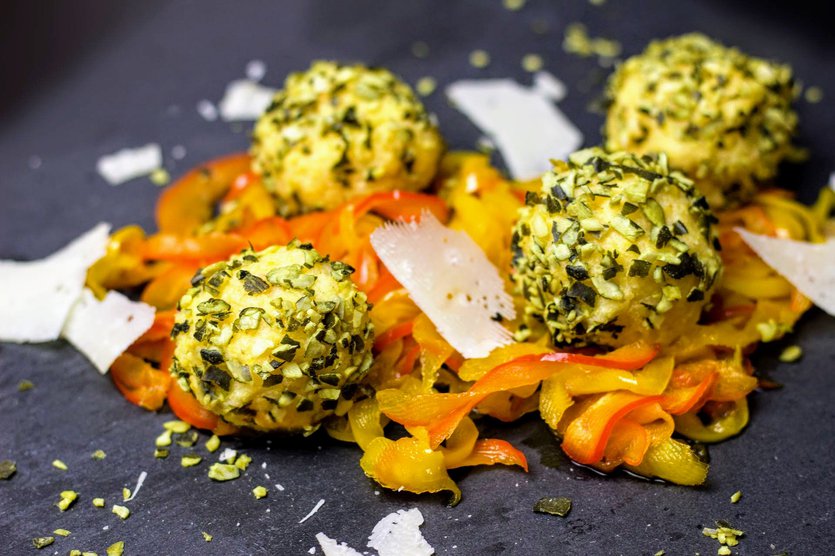
The best food which describes food in Slovenia is diversity (I use it again to describe Slovenia, I know). Despite the small size, there are 12 regions in Slovenia and each one has its specific cuisine.
Ask a Slovene about regions in his country and he will reply: pizza region, schnitzel region and stew region. This funny answer summarises Slovene cuisine - it's a mix of food from neighbouring countries. However, there are not only Italian, Austrian and Hungarian flavours - Slovenia offers also many Balkan dishes.
What is the food like in Slovenia?
- definitely not very vegetarian-friendly
- the basis of Slovene dishes is very often meat
- eco farms and slow food are very popular - traditional food in Slovenia is truly traditional 😉
Food to try in Slovenia if you're vegetarian:
→ Štrukli - it can be made with filo, French pastry or flour (usually groat flour). Stuffed with cheese, mushrooms, vegetables or fruits. When you ask about vegetarian dish in Slovenia the waiter will surely offer you štrukli. For me, the best food in Slovenia.
→ Jota - traditional bean soup with potatoes and sour cabbage served with bread. Soups are popular food in Slovenia, especially mushroom, pumpkin and asparagus soups.
→ Risotto - Slovene cuisine is based on the produce available seasonally so risotto is different according to the season.
→ Ocvrt sir - salty white cheese, usually fried or grilled.
→ Pisan kruh - tiger bread baked with three different flours: groat, corn and wheat flour.
Meat-based dishes in Slovenia:
→ Zlikrofi - a type of dumplings similar to ravioli, typical food in Idrija region. Made from the dough and stuffed with potato, bacon and onion. Zlikrofi is most often served with meat sauce called bakalca. It's a popular food in Slovenia.
→ Kraški pršut - traditional smoked ham similar to prosciutto but a bit less salty and more delicate than its Italian counterpart.
→ Kranjska Klobasa - another example of popular food in Slovenia. A sausage. Its recipe was created in the 19th century and hasn't been changed since. ONly certified producers can manufacture this sausage. Kranjska Klobasa is also unusual since it's acclaimed by... NASA. Well, this unique sausage was surveyed by NASA and taken into space by Sunita Wiliams - American astronaut of Slovene descent.
→ Burek - typical Balkan dish, a flaky, crispy dough filled with meat and often shaped in a spiral, which is then cut or wrapped in paper. In some regions, burek is served with a yoghurt drink.
→ Ćevap - a type of kebab, pita bread filled with skinless sausages and served with onion.
Now, the Slovene desserts (top food to try in Slovenia!):
→ Potica - pastry roll stuffed with nut filling, sweet cheese or poppy seed. There are about 80 types of potica fillings, so the choice is quite extensive!
→ Prekmurie Gibanica - delicious layered pastry with poppy seed, sweet cheese, nut, raisins and apple.
→ Cesarski praženec (šmorn) - known in Austria as Kaiserschmarrn. It's a sweet pancake which was shredded during frying. Usually served with jam and icing sugar.
→ Kremna rezina - famous Bled cream cake described earlier in the article.
How expensive is Slovenia?
Are you wondering how much money should you take on your trip? Is Slovenia expensive?
It depends on which country you compare it with. When comparing prices in Slovenia with the Balkans (e.x. Albania), then Slovenia looks like an expensive country to travel to. But when we look at prices in the nearby Italy, then Slovenia becomes one of the cheap places to visit in Europe.
Let's have a look at exemplary prices in 2019.
Price of petrol in Slovenia
Interestingly, the prices of fuel are the same at every petrol station in the country (the only exception are motorways). They are set every Tuesday and are in effect for a week.
- E95 - 1,21 EUR / l
- ON - 1,27 EUR / l
Public transport
- Bus ticket Ljubljana - Bled:
Adult – 7.8 EUR
Kid below 4 years – 1.5 EUR
Kid 4-10 years – 4.65 EUR
- Bus ticket Ljubljana - Postojna:
Adult (2nd class) – 6.59 EUR
Kid (2nd class) 6-12 years – 3.3 EUR - Train ticket Ljubljana - Bled:
Adult (2nd class) – 6.8 EUR
Kid (2nd class) 6-12 years – 3.5 EUR - Train ticket Ljubljana - Koper
Adult (2nd class) – 11.36 EUR
Kid (2nd class) 6-12 years – 6.08 EUR - Bus transfer Ljubljana airport - city centre: 4.7 EUR
Taxi prices in Slovenia
- Taxi Metro in Ljubljana
Start: 0.95 EUR
1 kilometre: 0.89 EUR
1h stand: 13.9 EUR - Taxi Plus in Maribor
Start: 1.2 EUR
1 kilometre: 1.15 EUR
1h stand: 24.48 EUR
Grocery
Chain stores offer the most reasonable prices. The most popular groceries in Slovenia are Mercator and Tuš but there are also popular Lild stores.
- Avocado: 1.19 EUR
- Baguette: 0.6 EUR
- Bread roll: 0,15 EUR
- Wheat toasting bread: from 0.9 EUR
- Wholemeal bread (about 400g): 2 EUR
- Croissant: 0.35 EUR
- Ketchup: 2.1 EUR
- Kiwi: 0.3 EUR
- Gouda cheese: 6.7 EUR / kg
- Pršut ham 100 g: 4 EUR
- A six-pack of Corona beer: 10.7 EUR
- Merlot red wine: from 2.1. EUR
- Mineral water 1.5 l: 0.6 EUR
- Coffee at a petrol station: 1.5 EUR
Restaurants
Eating out is the centre of Ljubljana is more expensive than in small Slovenia mountain resorts. Let's have a look at those prices:
Ljubljana (Restavracija Most)
- Tomato soup: 5 EUR
- Risotto with seafood: 14.5 EUR
- Stuffed chicken breast: 17 EUR
- King prawns: 13 EUR
- A glass of white Chardonnay: 4 EUR
- Apple pie: 5 EUR
- Tortilla (food truck): 4 EUR
Bohinj (Gostilna Danica)
- Mushroom soup: 4 EUR
- Spaghetti bolognese: 7 EUR
- Tuna salad: 7 EUR
- Ice-cream dessert: 3.5 EUR
- Panna cotta: 3.6 EUR
- Cheeseboard: 9.5 EUR
Other beautiful places in Europe
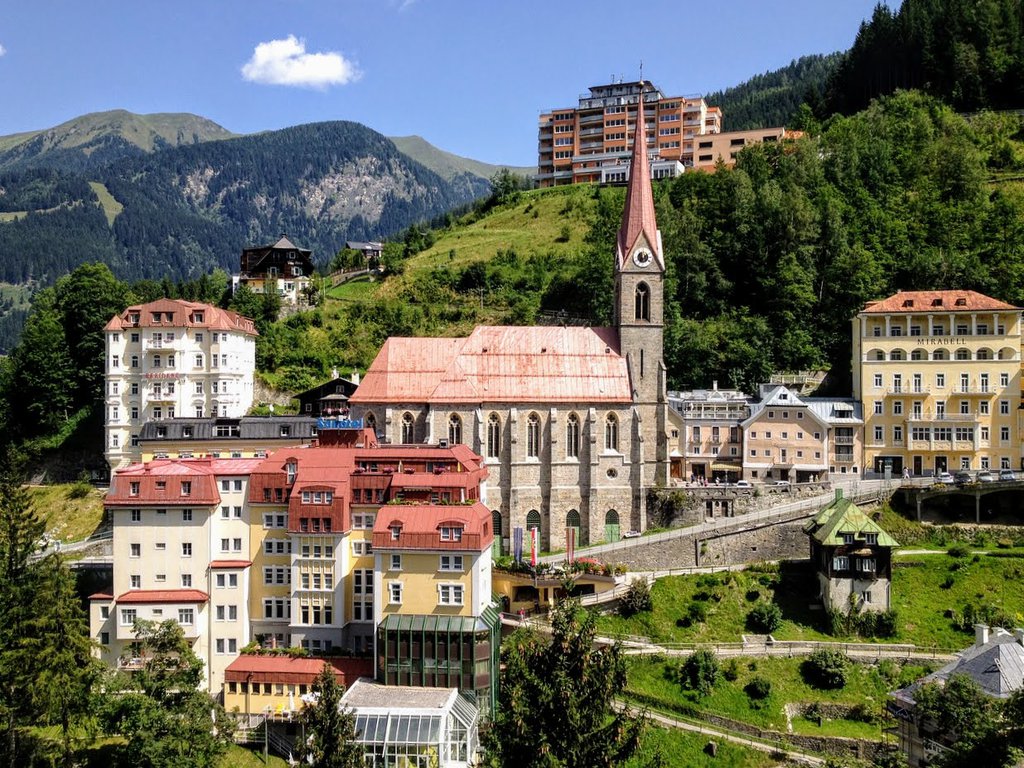
Europe offers loads of stunning destinations, making it hard to choose your perfect place. Mountains, lakes, seaside, ancient forests - there are many natural wonders and UNESCO sites.
Here are some of the most beautiful places in Europe, picked by me and fellow travel bloggers:
✅ 14 spa towns in Europe to visit if you need relax and rejuvenation
✅ 13 most beautiful mountain resorts in Europe
✅ 6 best Tatra Mountains resorts
✅ Adventure honeymoon - 16 best places in Europe


